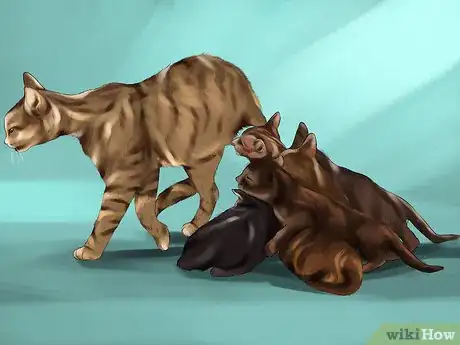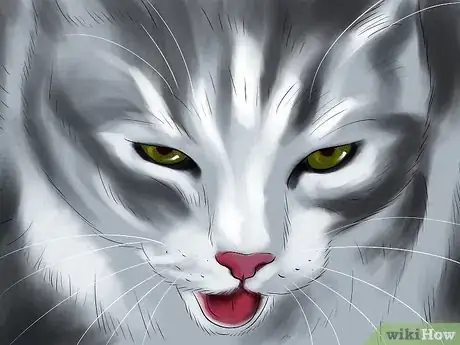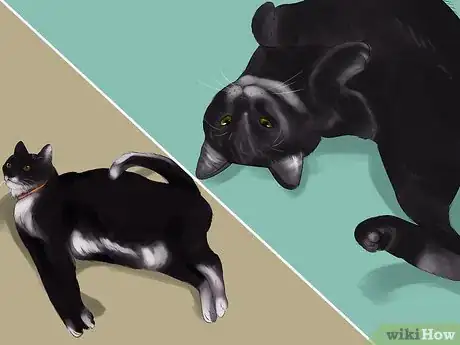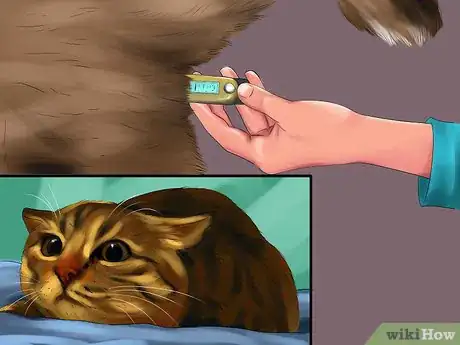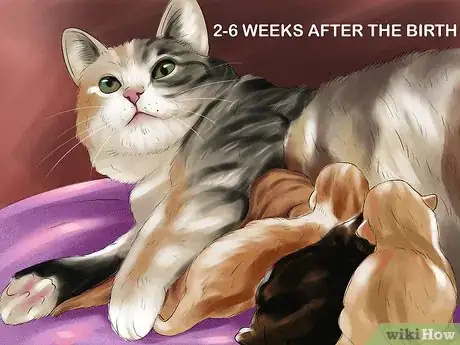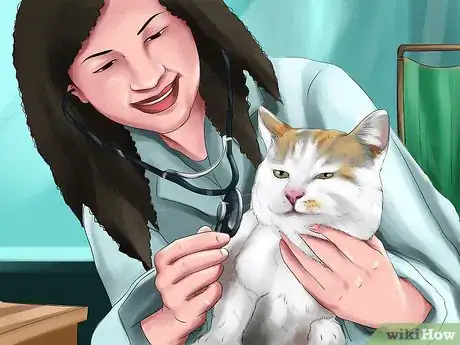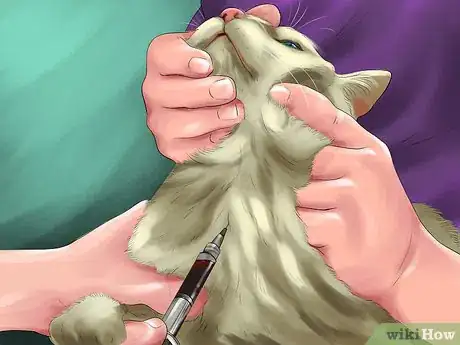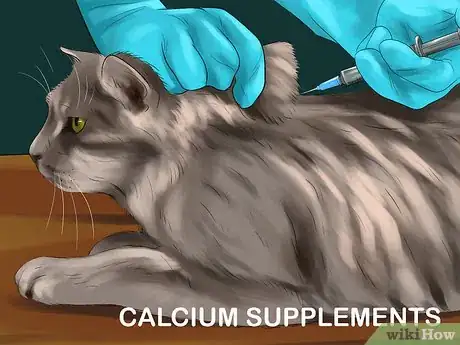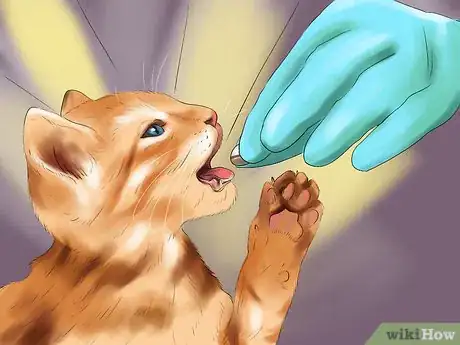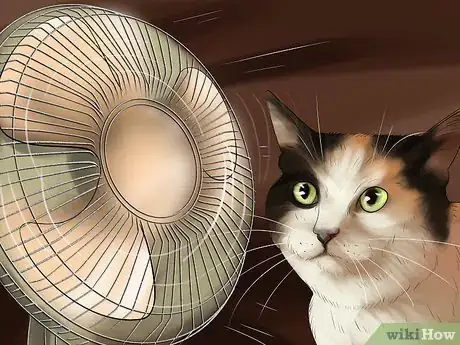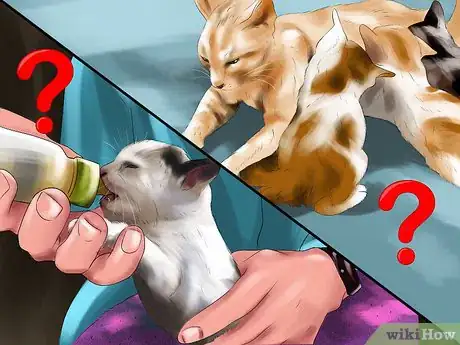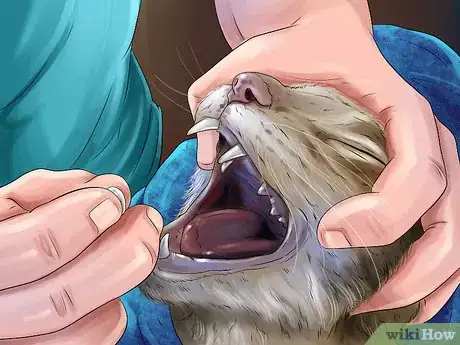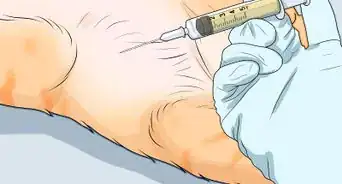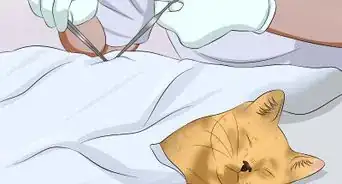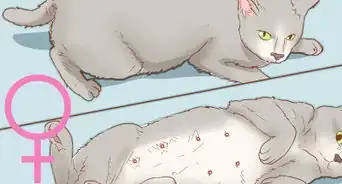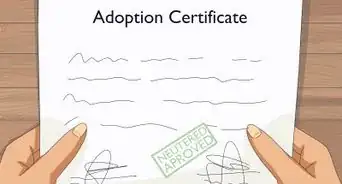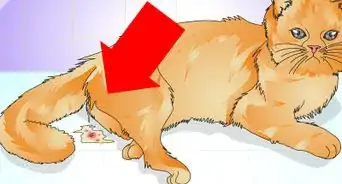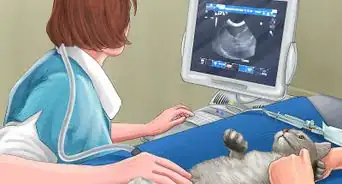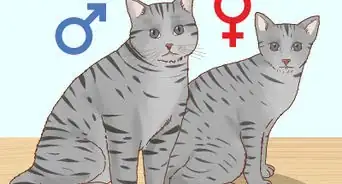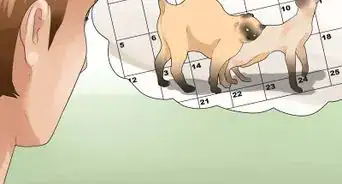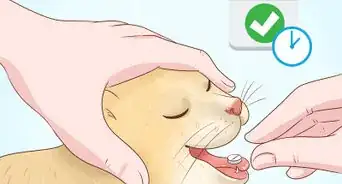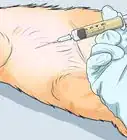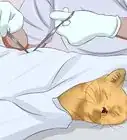This article was co-authored by Natalie Punt, DVM. Dr. Natalie Punt is a Veterinarian and the Founder and CEO of mPet- a smart phone app for pet owners to store, manage and transfer their pets medical records and health information. She specializes in small animal emergency and general medicine and veterinary practice economics. Dr. Punt holds a BS in Biochemistry and Molecular Biology from The University of California, Davis, an MS in Biochemistry from The University at Buffalo, and a DVM from Western University of Health Sciences.
This article has been viewed 17,313 times.
Eclampsia, also known as milk fever, occurs in during pregnancy or just after birth. It occurs due to a life-threatening decrease in blood calcium levels. Most commonly, it occurs in nursing mothers between two and six weeks after birth.[1] Identifying eclampsia quickly will help save your cat's life. Look for fever, restlessness, lethargy, and muscle spasms. To treat the condition, take the cat to the vet and get her calcium supplements.
Steps
Recognizing the Symptoms of Eclampsia
-
1Notice abnormal maternal behavior. Cats who have eclampsia may not act like normal mother cats. They may be inattentive to their kittens and not feed them. They may start acting lethargic or depressed. In some cases, they can even become aggressive.[2]
-
2Monitor for restless behavior. Milk fever may cause cats to be restless or nervous. They may seem agitated and unable to sit still. This may lead to excessive pacing. They may also start whining or panting.[3]Advertisement
-
3Check for muscular problems. Some cats develop muscular symptoms with eclampsia. They may have trouble walking, or start stumbling or tripping. Their gait may be stiff and awkward. Cats may also be disoriented and not know where they are and run into things.[4]
- The cat may start having tremors and having convulsions.
- In some cats, their body may become stuff. They may lie with their limbs stiff and rigid.
-
4Watch for digestive problems. In some cats, they may start vomiting once they develop eclampsia. They may also have diarrhea. In many cases, they stop eating.
-
5Look for other symptoms. Cats with eclampsia may run a high fever. They may have dilated pupils or start scratching their face a lot because it is itchy.[5]
Diagnosing Eclampsia
-
1Determine if your cat is at risk. Eclampsia occurs most commonly in nursing cats, but can also happen to pregnant cats. Usually, the condition occurs between two and six weeks after the birth of the litter. However, it can occur outside of this time frame. It occurs most often with a first time litter.[6]
- If the cat received poor nutrition during or after the pregnancy, she is at a higher risk for eclampsia.
- Cats who carry and give birth to large litters are most at risk.
-
2Take your cat to the vet. Once you start to notice that your cat displays any of these symptoms, take her to the vet immediately. Eclampsia is a serious condition that needs to be treated immediately to avoid the death of the cat. Your vet will give your cat a physical examination.[7]
- The vet may want to know details about your cat's diet during and after pregnancy and any supplements she's been given.
-
3Have the cat's blood tested. If the vet suspects eclampsia, they will do a biochemical profile to check blood calcium levels. Low calcium in the blood leads to a positive diagnosis. The vet may also look for low blood sugar.[8]
- Magnesium levels may also be checked.
Treating Eclampsia
-
1Keep your cat at the vet while they receive calcium supplements. The most common treatment for eclampsia is for the vet to give the cat calcium intravenously to help slowly raise the blood calcium levels. The cat will stay at the vet during this procedure. The vet will monitor the calcium blood levels closely to make sure the cat doesn't get too much calcium in the blood.[9]
- Vitamin D may also be given to help the cat absorb the calcium.
-
2Provide the cat with anti-seizure medication. If the cat's condition has progressed to muscle spasms and seizures, the vet may provide them with anti-seizure drugs to help with the seizures and tetany.[10]
- This will be given while at the vet to stabilize the cat before they are given calcium supplements.
-
3Bring the fever down. If the cat has a high fever, the vet will work to try to bring that down. They may try to cool her with a fan to lower her body temperature. They may also cover the cat with cool damp cloths.
-
4Determine if the kittens should be weaned. While the mother is being treated, the kittens will have to be hand fed. Talk with the vet about whether or not the kittens can return to nursing normally after the mother has recovered. If the vet says it is okay, the mother's blood calcium level will be monitored as the kittens nurse.[11]
- If the vet thinks the mother shouldn't nurse anymore, they will recommend weaning the kittens.
-
5Give the cat calcium supplements at home. After the cat has been treated, the vet will more than likely prescribe calcium supplements for you to continue giving the cat at home as follow-up care. Follow the vet's instructions for the supplements. This is generally the only aftercare since getting treated by the vet generally cures eclampsia.[12]
- Provide the mother cat with a good quality kitten food, as this is more energy dense and has a higher level of calcium than regular cat food.
- Don't give the cat calcium supplements without a vet's approval. Calcium supplements during pregnancy can mess up her ability to absorb it, which can lead to eclampsia. Calcium supplements after pregnancy can also be dangerous.
References
- ↑ https://vcahospitals.com/know-your-pet/eclampsia-in-cats
- ↑ https://vcahospitals.com/know-your-pet/eclampsia-in-cats
- ↑ https://vcahospitals.com/know-your-pet/eclampsia-in-cats
- ↑ https://www.vetary.com/cat/condition/eclampsia-
- ↑ http://www.petplace.com/article/cats/diseases-conditions-of-cats/reproduction/eclampsia-in-cats
- ↑ http://www.petplace.com/article/cats/diseases-conditions-of-cats/reproduction/eclampsia-in-cats
- ↑ https://vcahospitals.com/know-your-pet/eclampsia-in-cats
- ↑ https://vcahospitals.com/know-your-pet/eclampsia-in-cats
- ↑ https://www.vetary.com/cat/condition/eclampsia-
About This Article
If you think your cat might have Eclampsia, also known as milk fever, notice if your cat seems inattentive to her kittens and avoids feeding them, which is a common sign of Eclampsia. You should also notice if she seems restless or nervous and if she whines, pants, or paces back and forth, which are all common signs of eclampsia. If your cat is vomiting, or has diarrhea or fever, these are also signs for concern. You should take her to the vet immediately if you think she has Eclampsia, so they can diagnose her and prescribe any medication she needs. Follow your vet’s instructions for medicating your cat, even if she seems to get better. If your vet thinks the mother shouldn’t nurse anymore, you’ll have to hand feed the kittens. For more tips from our Veterinary co-author, including how to bring your cat’s fever down at home, read on!
